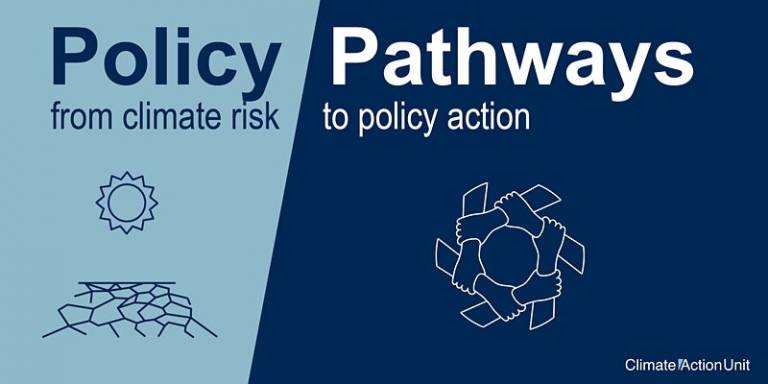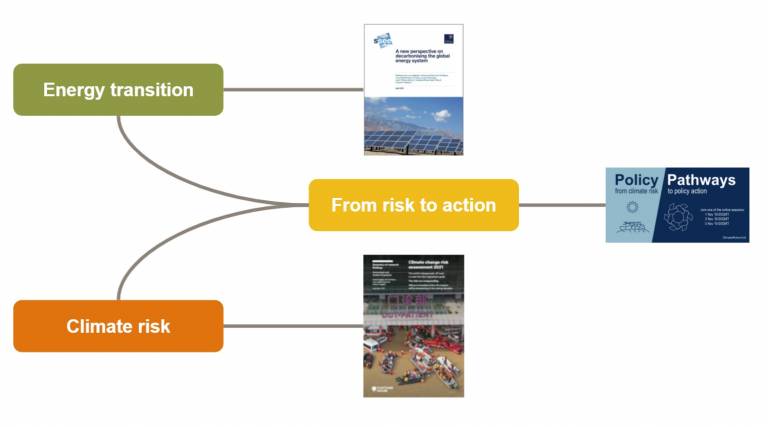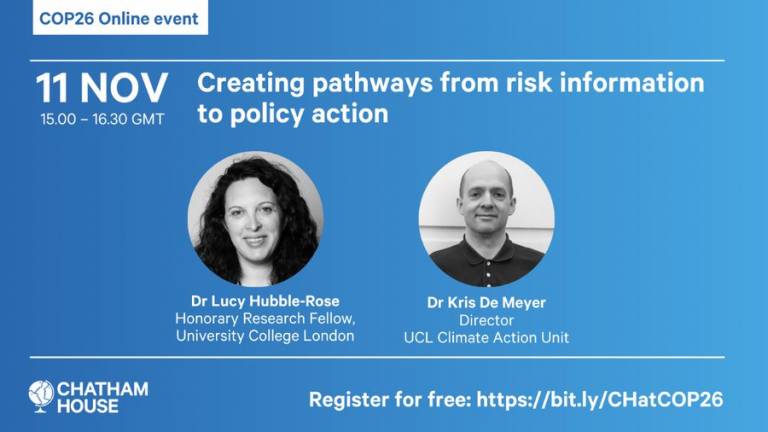Blog: Policy Pathways - a virtual gym for climate policy
29 November 2021
Can existing policy levers (such as spending, taxation and regulation) be used to deliver more ambitious climate policy and speed up the decarbonisation of the global energy system?

To help policymakers and climate experts explore that question, between 1 and 9 November 2021, the Climate Action Unit ran 9 interactive sessions of online policy simulation tool Policy Pathways.
The participant experience
Entering the simulation via an online platform, participants join the Climate Strategy Advisory Board to a new Prime Minister who has been elected on the promise of delivering immediate climate action.
The first task of the panel is to advise the PM on how to make a large-scale clean energy park a reality. Participants receive information through video clips, expert testimony, and written memos from the Prime Minister’s office. They are then asked to discuss and decide on the efficacy of suggested spending, taxation and regulatory policies to support the delivery of the clean energy park.
A near-reality scenario for the energy system
The simulated clean energy park does not yet exist but projects like it are set to become reality in the next five to ten years. In sun- and wind-rich places like Australia, Qatar and Saudi-Arabia, plans are being drawn up (and partially underway) to build large-scale solar- and wind energy parks, with on-site electrolyser plants to produce ‘green hydrogen’. The hydrogen is transformed into ammonia, a carbon-neutral energy carrier which can be stored and shipped around the world like natural gas.
At 25-50GW of combined solar and wind capacity, these integrated energy parks are 10-100 times larger than the current largest renewable installations. Though they might seem mind-boggling by today’s standards, these kinds of projects must become reality in order to decarbonise the global energy system. They will be crucial in pushing the production of renewable electricity to oil and gas scale, and making the electricity easily transportable (in the form of ammonia as the energy carrier) from places where it will be cheap to produce to places where it would be more expensive.
The need to simulate policy futures
Policy Pathways was developed as a result of 20+ co-production workshops delivered in 2020-2021 with international policymakers and experts in climate risk and energy policy. Their purpose was to test how to effectively deliver expert information on climate risk and energy policy to decision makers.

The workshops uncovered several important insights about how policymakers engage with information about climate risk and policy:
- Policymakers struggled to connect information about climate risk to a need to be more ambitious in the formulation of climate policy.
- When given information about potential policy levers, policymakers struggled to understand how they could be used to deliver climate policy, or how they could work in their context.
To break through the gridlock caused by the combination of these factors, the scenario sets up a concrete context in which people participate in a ‘problem-solving’ mindset, rather than defaulting to ‘critiquing’ mode. In doing so, Policy Pathways offers experts a virtual policy gym: a place to practice pulling policy levers in a real-world context.
In addition to offering policy practice, the tool also generates data. It logs people’s rating and ranking decisions on the efficacy of specific policy levers. Participants’ discussions - held under Chatham House rule - offer crucial insights into the reasoning behind their decisions. The tool thus generates insights on how policymakers and other experts think about climate and energy policy.
What next?
The UCL Climate Action Unit summarised the results of the first 9 simulation sessions in the Chatham House COP26 Virtual Pavilion on 11 November. Further simulation sessions will take place in late 2021/early 2022, and the insights gathered from these will be used to help international policymakers think more innovatively and ambitiously when formulating climate policy.

Further information
The co-production workshops leading to Policy Pathways also shaped several important reports including:
To find out more about Policy Pathways, visit our Policy Pathways webpage. We will post updates and further information here as it becomes available.
Acknowledgements
Policy Pathways is a collaboration of Chatham House, the UCL Climate Action Unit, and digital studio Fast Familiar.
The work is funded by the UK-China Cooperation on Climate Change Risk Assessment project which is a programme of work funded through the prosperity programming of the Foreign, Commonwealth and Development Office.
 Close
Close

